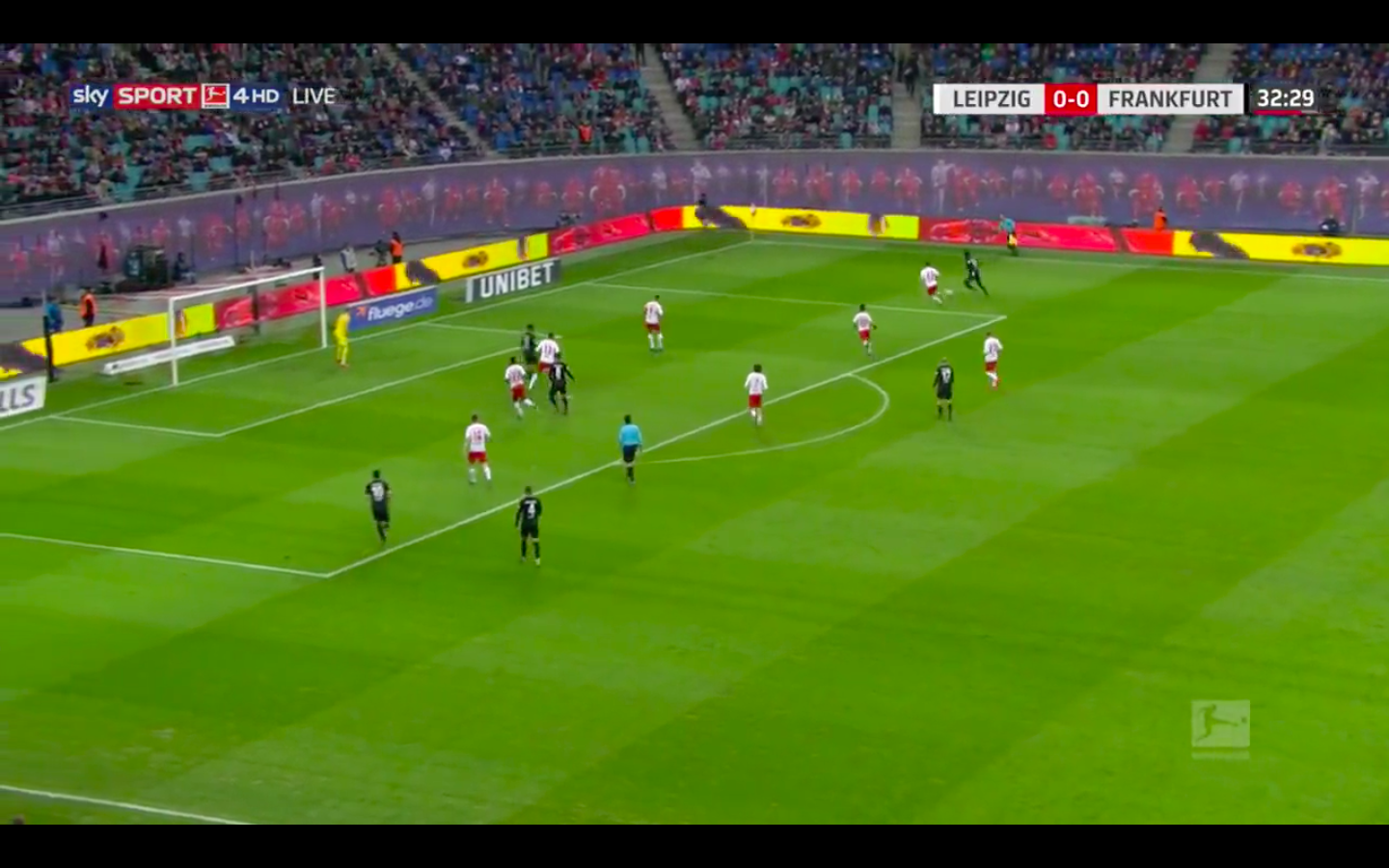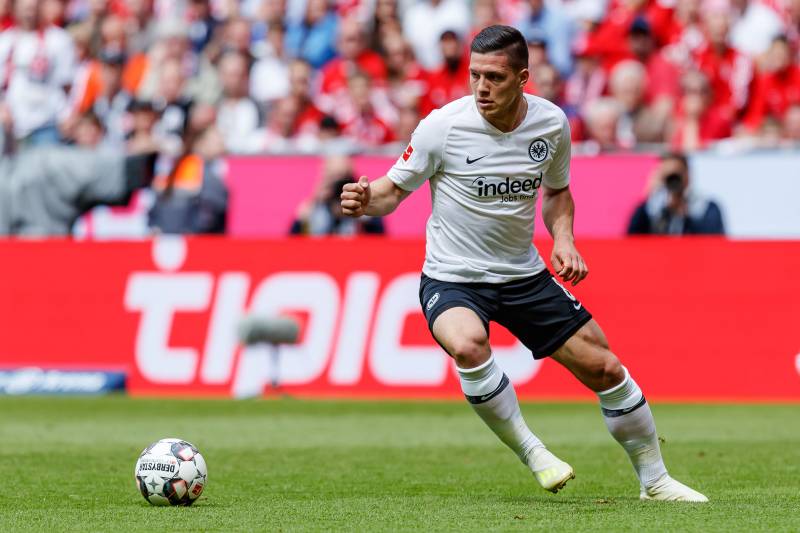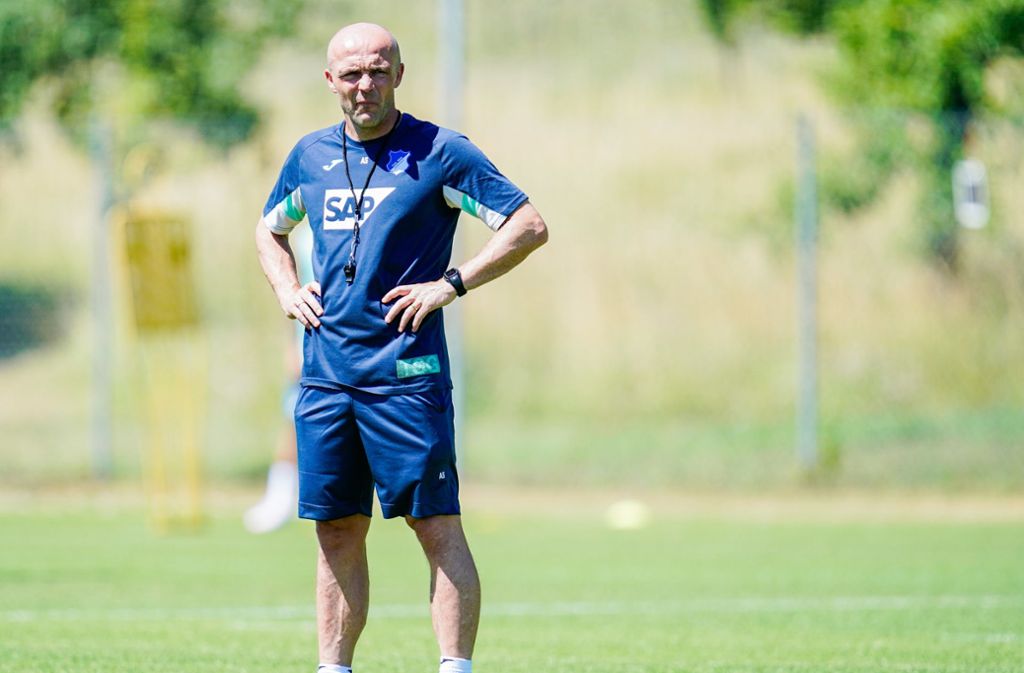Adi Hutter’s hyper-pressing Eintracht Frankfurt machine

Adi Hutter’s Eintracht Frankfurt side have a reckless abandon for pressing not seen in the Bundesliga since Roger Schmidt’s hyper-aggressive Bayer Leverkusen side. At BSC Young Boys, Hutter was once believed to be a pressing heretic as it was said that he even encouraged his sides to lose possession higher up the pitch, so they could regain it in advantageous positions. The transformation of players such as Luka Jovic, Sebastien Haller, Danny Da Costa and Phillip Kostic has aided the former Young Boys coach in creating a well-oiled unit that has taken the Bundesliga and the Europa League by storm. Ante Rebic, Jovic and Haller have created one of the most lethal front lines on the continent.
High Frankfurt pressing
Sebastien Haller and Ante Rebic will lead the pressure phase with a line of four men behind them, one of them will situationally press the keeper with Jovic moving higher in the pressing phase. The intriguing aspect of Frankfurt’s high pressing and all facets of their play under Hutter is their highly positioned wing-backs in Kostic and Da Costa. Upon losing possession, most highly positioned wing-backs instincts would be to drop back into a rigid defensive shape, but Frankfurt’s full-backs instinctually push up to press the ball, even if they are both caught up high upon ball loss. Da Costa will also sometimes move into the centre of the pitch to press the man in possession.
This leaves ample space behind the highly positioned wing-backs so the wide centre backs, Evan N’Dicka and Martin Hinteregger will slide over to cover for their wing-backs. Both are adept at covering the wide areas as N’Dicka will sometimes switch to full-back when Frankfurt switch to a four chain in the defensive and build up phase. There will be a solitary defensive midfield pivote to shield as Gelson Fernandes, Sebastian Rode and Makoto Hasebe can fill this role.
Hutter’s side seek to force the long-ball with aggressive man-orientated pressure as the whole team will constantly shift to put pressure on the man in possession and deny him direct passing options. Not only the wing-backs will move higher in the pressing phase, but the deepest-lying midfielder will track his man into the opposition half. Frankfurt will seek to force a long ball to their centre-backs who will recycle the ball rapidly while the opposition are disorganised in order to move the ball into spaces quicker and create opportunities.
Aggressive Frankfurt counter-pressing
Hutter implements an aggressive counter-press as the player closest to the ball will always push forward to apply pressure on the opposition player in possession. Frankfurt could lose the ball on the flanks or within the opposition side’s box, but they will always push forward to counter-press. The pivote will provide press protection as in the image below, Hasebe has remained deeper in case Shakhtar play out of Frankfurt’s first wave of pressure. When the ball is lost higher up the pitch, the pivote will also situationally push up to press the ball with the three chain also moving up and acting as press security.
Their high wing-backs present an issue as the opposition team have space to break if the three-chain is not split and covering them. N’Dicka and Hinteregger being comfortable in defending 1v1s in the wide-areas allows Frankfurt to be so aggressive when pressuring the ball.
Build-up and approach play in a 3-1-4-2 shape
Frankfurt seek quick transitions with rapid approach play as they do not look to hoard possession. Their centre-backs, Hinteregger, Hasebe, N’Dicka and Almamy Traore are granted a lot of creativity in possession as ball-playing centre-backs. Frankfurt’s three chain will split very wide to cover the wide areas with highly positioned wing-backs while they will constantly search for the out-ball to Haller in between the lines. Haller will drop into the ten space to win aerial duels and work quick combinations to create goal-scoring opportunities. The deepest-lying midfielder is also tasked with receiving the ball in tight areas and being heavily involved in build-up. Fernandes and Hasebe are more likely to drop deep to make it a four chain to work the ball through pressure.
In this picture from the match against Hoffenheim, Hasebe has collapsed from the six space to position himself in between the centre-backs. This has allowed N’Dicka to push up to the space above Hinteregger in possession and underneath Kostic in order to create another avenue through Hoffenheim pressure. It has also created 5v3 overload on that flank in favour of Frankfurt with good connections for the team to combine in approach play. Hasebe and N’Dicka worked this move frequently to beat Hoffenheim pressure.
Frankfurt stretching play
Frankfurt are constantly looking to stretch the opposition defence with their highly positioned wing-backs as in the photo above, both wing-backs are placed in areas of space in high positions at the same time to stretch the RB Leipzig defence. A facet of their build-up play is working quick connections in the centre to draw opposition pressure and focus into the centre before hitting balls out to their wing-backs in wide areas. Centre-backs regularly break the central-lines before midfielder’s chip balls out to Kostic or Da Costa in the wide areas to create opportunities.
Frankfurt being stretched in the defensive phase
A dilemma for teams that employ formations with a back three are managing spaces between the wide fullbacks and wing-backs. Teams can stretch the back three or find spaces in the half-spaces too. Although, Frankfurt have the two aforementioned wide centre-backs who are well-versed in defending wide areas and in 1v1s, their formation does create some structural issues for them. There is constantly ample space for them to cover and for opposition wide players to break into while they can be stretched when their wing-backs do not get back into position quick enough.
Frankfurt normally revert to a 5-3-2 shape in a medium block and a 5-4-1 in a low block to constrain the central spaces and prevent opposition overloads in the wide spaces. It can be difficult to revert to this shape after their ferocious counter-press is beaten and the opposition breaks or when the wing-backs push up to press the wide-man in possession. The pivote is also tasked with sliding over to cover the space but at times the gaps can be too wide.
Conclusion
Frankfurt won the DFB Pokal last season and are in the Europa League Quarter-Finals as an undefeated side in the competition. They are also making another challenge for a European place after some shrewd signings by Fredi Bobic and his scouting staff as well as the astute appointment of Adi Hutter. Martin Hinteregger and Sebastian Rode are just two January signings who have made an instant impact and have become corner stones of the team in such a short space of time. The development of players at the club has been exceptional as they play an intense style of football at a high-pace with the players well drilled in their roles and responsibilities. They continue as the only German team with the prospect of European glory this season as they are nestled comfortably in the Bundesliga European places in 5th, 4 points behind 3rd and a win away from 4th.













